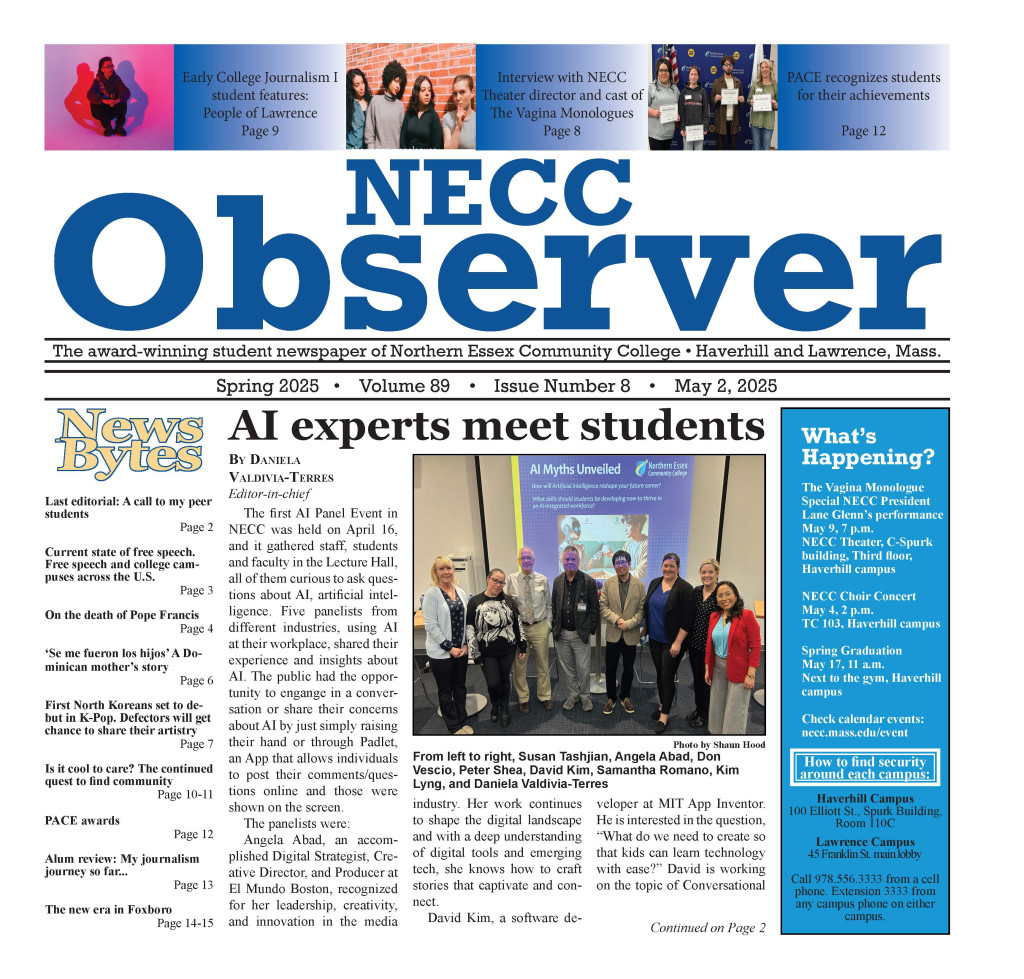At any institution around the world, whether it is a four-year university, communitycollege, high school, middle school, or elementary school, the bread-and-butter of these places are centered around the students, whose job is to learn, and the faculty, whose job is to instill knowledge that help their students succeed in their future careers.
This message is equally shared by the faculty and staff present in the boisterous community of Northern Essex Community College, who reflect on their determination to learn from their time as college students to evoke a positive environment in their classrooms.
A shared reality between many of the professors here at Northern Essex is the uncertainty of what career to focus on after college. For many of them, they chose different programs to major in when compared to the programs that they teach now at the community college.
Professor Mary Jo Shafer, coordinator of the Journalism and Communications program in the department of Performing Arts and Communication, attributes her Bachelor’s degree in American Studies and Creative Writing and past work at newspapers in shaping her career as a professor at Northern Essex. “It’s funny, I never really thought much about teaching,” stated Shafer. “People would always say, “Oh, maybe you should go into teaching.” and I would be like, “No.””
Shafer, who would later receive her Master’s degree in Journalism from the University of Alabama, said she eventually realized that her career as a newspaper editor involved teaching as well, as her qualities of leadership in a newsroom helped cement her role as a teacher to the young reporters under her wing.
The mutual relationship between students and faculty can also be attributed to the attitudes of professors, who try to make their classes worthwhile and entertaining.
However, for some professors, such as Professor Lori Heymans of the Math department, some subjects are difficult to extract enjoyment from them. “I try to be as interactive and kind of fun in class, but when you teach Math, fun and math don’t really go together,” stated Heymans. “But, I try to have an environment where the students can kind of trust me, so they can be able to ask questions.”
Heymans, who has herBachelor’s in Electrical Engineering and her Master’s in Math, furthermore remarked on how she aims to help her students through multiple resources, including office hours and the MathCenter.
In the world of professors, one factor solely stands out that strictly focuses on challenging their teaching: student feedback.
Although some professors would vehemently cringe at the attempts of their students trying to criticize their work, other professors, such as Adjunct Professor David Rattigan, who teaches Public Speaking classes, encourage student feedback, but with certain limitations. “There are times that whenever I look at the criticism from students, it’s the student who doesn’t show up for the first class, and then says, “Well, I don’t know what the class was about. “Well, you didn’t understand what the class was about because you didn’t show up (to class)enough.” stated Rattigan. “Sometimes, I think that student feedback could be better informed. I think when a good student gives me feedback, I value it more.” Rattigan, who simultaneously teaches classes at University of Massachusetts, Lowell, additionally reflected on the relationship between the student and their professor, stating that the relationship peaks when the student and professor are working towards a common goal in the classroom.
The faculty within a school system are either cherished or despised by their student body. Nevertheless, in any school environment, whether it be a four-year university, community college, or high school, the incessant message that faculty and staff aim to plant in the minds of their society is fairly simple: to support the people that help shape their budding community.

